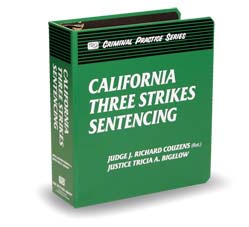The Death Penalty has always been a topic of extreme controversy and is perhaps the most well known criminal sanction. Its more proper name is capital punishment which is defined by Webster’s New College Dictionary (2008) as the infliction of the death penalty, or sentence of punishment by execution, for the commission of certain extremely serious crimes. According to the Death Penalty Information Center (DPIC) (2008), the first appearance of death penalty laws can be dated back as far as the Code of Hammaurabi in the Eighteenth Century B.C. Since that time civilizations all over the world have used this severe form of punishment to punish criminals for all sorts of crimes. Many different forms of execution have been used including crucifixion, hanging, beheading, drawing and quartering, drowning, and poisoning. More modern methods of execution have since surfaced that are considered to be more “humane” such as the electric chair, the gas chamber, and lethal injection. Many argue that the death penalty is yet another policy that violates the Eighth Amendment’s right against cruel and unusual punishment. On the other hand, equally as many argue that the death penalty is a necessary evil.
 At its creation, the justification for the death penalty was primarily lex taliones, or eye for an eye. Basically the idea was retribution and the feeling that what the offender took from someone else should be taken from them as well. Using this ideology then, if a person killed someone, they should themselves be killed because when the offender took another’s life, in doing that act they forfeited their own (Bayat, 1999). This rationale dates back to when the church was the primary law maker. Since the church was responsible for laying out the laws of the land, the basis of most of them was morals. In today’s society however, because of the separation of church and state in the United States in particular, it is much less accepted as a valid justification by the government. That does not stop the public from feeling criminals should pay for the crime of murder with their own life however.
At its creation, the justification for the death penalty was primarily lex taliones, or eye for an eye. Basically the idea was retribution and the feeling that what the offender took from someone else should be taken from them as well. Using this ideology then, if a person killed someone, they should themselves be killed because when the offender took another’s life, in doing that act they forfeited their own (Bayat, 1999). This rationale dates back to when the church was the primary law maker. Since the church was responsible for laying out the laws of the land, the basis of most of them was morals. In today’s society however, because of the separation of church and state in the United States in particular, it is much less accepted as a valid justification by the government. That does not stop the public from feeling criminals should pay for the crime of murder with their own life however. The other justification used to validate the use of capital punishment as a criminal sanction is deterrence. The hope is that seeing those convicted of murder receive such a severe penalty will deter others from committing the same crime. When public executions were the norm, they were in particular thought to have a major deterrent effect since the public could see the humiliation and sometimes torture. Contrary to this hope however, according to the data collected from the Uniform Crime Report (UCR) in 2009 by the Federal Bureau of Investigation (FBI) “the average murder rate of death penalty states was 4.9, while the average murder rate of states without the death penalty was 2.8” (DPIC, 2010). What this data suggests is that not only is the death penalty not an effective deterrent, but it may actually be increasing the crime rates – in the United States at least. One argument is that because there are so many delays in most states that there is no certainty for the offenders that they will be actually executed and it therefore serves as a very poor deterrent. No matter what the reason for this phenomenon, it only fuels the fight against the death penalty.
Despite discrediting statistics like those above, the death penalty still remains in favor with a majority of the population. I think many feel that even if the death penalty does not deter crime the way it was intended to, it still eliminates the world of criminals who are considered a gross threat to society and deemed unfit to remain with the general population. Given this sentiment, it should be too surprising then that 36 out of 50 states in the U.S. have implemented a form of the death penalty and many foreign countries employ it as well including Singapore which still has public hangings. Nevertheless, this does not keep people from feeling that it is not the government’s place to kill. In all actuality, they have a valid point since killing is the exact crime the criminal is being punished for. The death penalty is an unforgiving and final punishment that cannot be undone, but it has been deemed a necessary evil and the government obviously still feels that this is the best way to deal with criminals guilty of ruthless and heinous crimes.
References:
Bayat, Mufti Zubair. (1999). Capital Punishment Maintains Law and Order. In Keyzer, Amy Marcaccio (Ed.), Does Capital Punishment Deter Crime? (pp. 53-56). Detroit: Greenhaven Press.
Webster’s New College Dictionary (3rd ed.). (2008). Boston, MA: Houghton Mifflin Harcourt Publishing Company.
Death Penalty Information Center. (2010). Facts About the Death Penalty. Retrieved from http://www.deathpenaltyinfo.org
Death Penalty Information Center. (2010). Murder Rates 1996-2009. Retrieved from http://www.deathpenaltyinfo.org/murder-rates-nationally-and-state#nat1970



